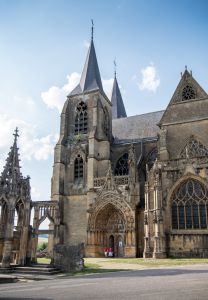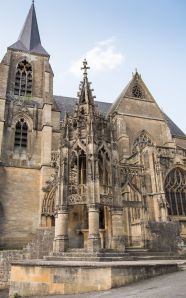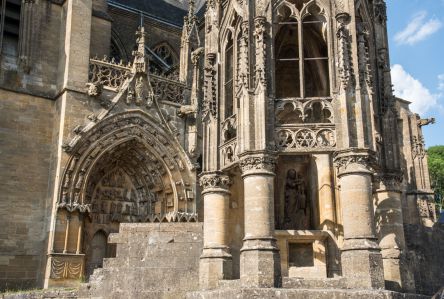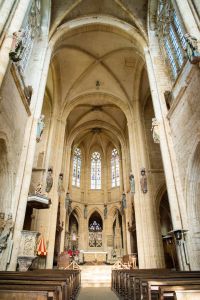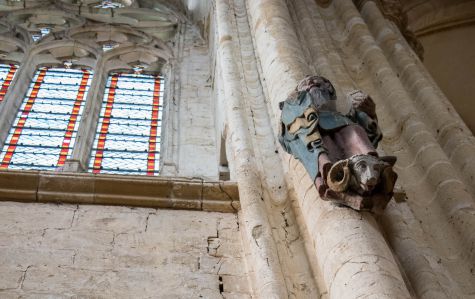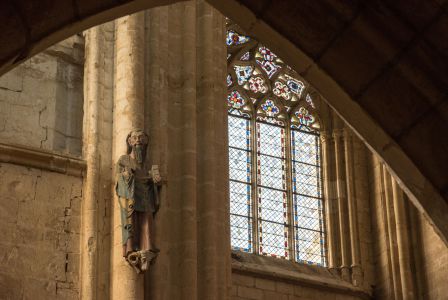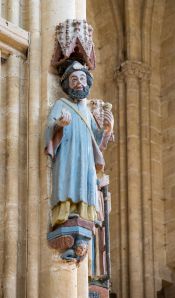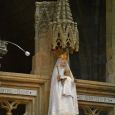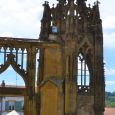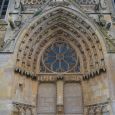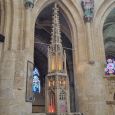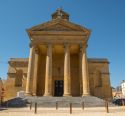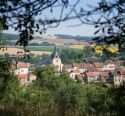Basilica | XIII-XV | Gothic, Renaissance | Catholic Church




Map
Opening hours
01 April - 30 September
Mon 9.00 - 18.00
Tue 9.00 - 18.00
Wed 9.00 - 18.00
Thu 9.00 - 18.00
Fri 9.00 - 18.00
Sat 9.00 - 18.00
Sun 9.00 - 18.00
01 October - 31 March
Mon 9.00 - 17.00
Tue 9.00 - 17.00
Wed 9.00 - 17.00
Thu 9.00 - 17.00
Fri 9.00 - 17.00
Sat 9.00 - 17.00
Sun 9.00 - 17.00
Guided tour
+33 3 29 88 90 96
Religious offices
2d Sunday of the month : 10.30 am
Description
Its construction began in the middle of the 13th century, after the miraculous appearance of a statue of the Virgin Mary, and extended over three phases: the towers and aisles in the 13th century, the choir and sacristy in the 14th century and the fusion between the western and eastern parts from 1375 to 1400. The building was classified as a historic monument in 1840.
The basilica is famous for its " Receiveress ", attached to the church enclosure. This small stone lace aedicula, considered unique in the world, was designed to welcome the devotions of pilgrims and receive their offerings. Its moulding has been on display at the Cité de l'Architecture et du Patrimoine in Paris since 1898.
Until the end of the 18th century, Avioth was a respite church where the Virgin was reputed to bring stillborn children to life temporarily in order to allow them to receive baptism. Today, pilgrims continue to come in great numbers to pray in front of the statue of Our Lady of Avioth, especially on July 16 during the ancestral pilgrimage.
Translated with www.DeepL.com/Translator
Photos
Media
Remarkable elements
Notre Dame of Avioth
Virgin and Child from the 12th century, called Our Lady of Desperate Causes. The discovery of this Virgin in a thorn bush was the reason for the construction of the church.
Translated with www.DeepL.com/Translator (free version)
The Receiver
A 15th century Edicule, unique in the world, built in the flamboyant Gothic style at the back of the wall surrounding the church and used to receive offerings from pilgrims.
Translated with www.DeepL.com/Translator (free version)
Large portal
Western portal from the end of the 14th century, which has preserved an exceptional statuary of about one hundred sculptures and whose main theme is the Last Judgement.
Translated with www.DeepL.com/Translator (free version)
St. John's Chapel
The last part of the church's shell construction, this chapel is in the Renaissance style with its arch decorated with mythological symbols.
Translated with www.DeepL.com/Translator (free version)
Eucharistic Tower
A marvel of stone lacework, this structure contains the tabernacle. It is a miniature copy of the Receiver situated outside. Thanks to the ambulatory, it can be admired from all sides.
Translated with www.DeepL.com/Translator (free version)




